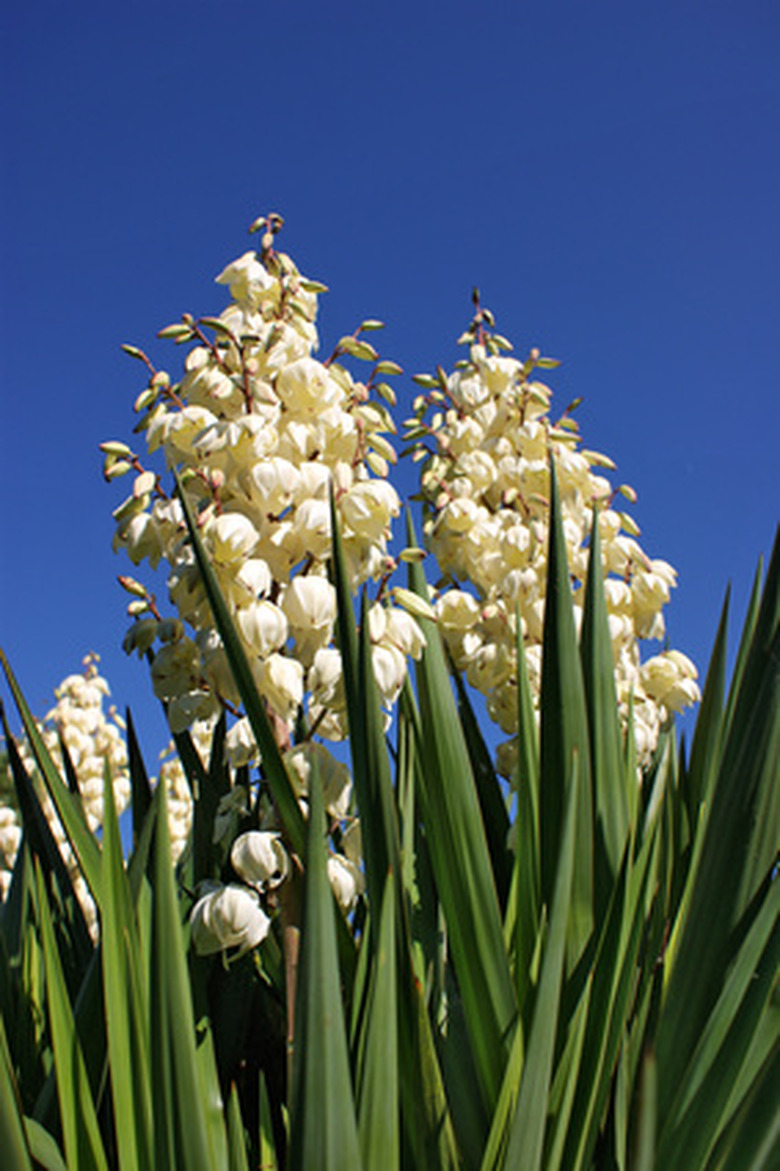What Is A Yuka Plant?
Many different varieties of yucca plants grow throughout the southwest region of the United States. This plant loves the dry, hot climates of the desert southwest. This desert beauty is featured in residential and commercial landscapes for its showy flowers and evergreen leaves.
Description
All varieties of yucca plants feature leaves that quickly identify the plant. Yucca plants have needles that grow upwards from the base of the plant. The ends of these needles are very sharp, protecting the plant from predators in the arid desert. Depending upon the variety, yucca plants can grow up to 10 to 13 feet tall.
- Many different varieties of yucca plants grow throughout the southwest region of the United States.
- All varieties of yucca plants feature leaves that quickly identify the plant.
Flowers & Fruits
Yucca plants produce a tall stalk from the center of the plant. This stalk grows 3 to 5 feed tall and yields large flowers similar in shape to lilies. After the flowers have finished blooming, fruit pods measuring 2 to 3 inches long can be found on the stalk. Inside each pod are many seeds.
Uses
Yucca plants have served many medicinal and practical uses. Historically, Native Americans used various parts of the yucca plant to make crafts, food, yarn, rugs, baskets and whipping belts. The roots and the leaves of the yucca plant have also been used to treat inflammation, arthritis and joint pain. Some herbalists use the plant to brew tea.
- Yucca plants produce a tall stalk from the center of the plant.
- The roots and the leaves of the yucca plant have also been used to treat inflammation, arthritis and joint pain.
Varieties
There are more than 40 different species of yucca plant within the genus. Some of the most common types of yucca plants are the Narrowleaf Yucca, Soaptree Yucca, Beargrass, Fineleaf Yucca, and Soapweed Yucca. Although the vast majority reside in the desert, a few varieties grow in the Caribbean Islands and Southeastern United States.
Pollination
Yucca plants are pollinated differently than most other plants. Yucca plants depend on a specific type of moth for pollination. This yucca moth takes the pollen and inserts it into the stigmata of the flowers produced by the yucca plant. These moths emerge from their cocoons in the spring and reside in the plant as the flowers of the yucca are blooming. The larvae of the yucca moths are contained within the fruits produced by the yucca plant.
- There are more than 40 different species of yucca plant within the genus.
- This yucca moth takes the pollen and inserts it into the stigmata of the flowers produced by the yucca plant.
